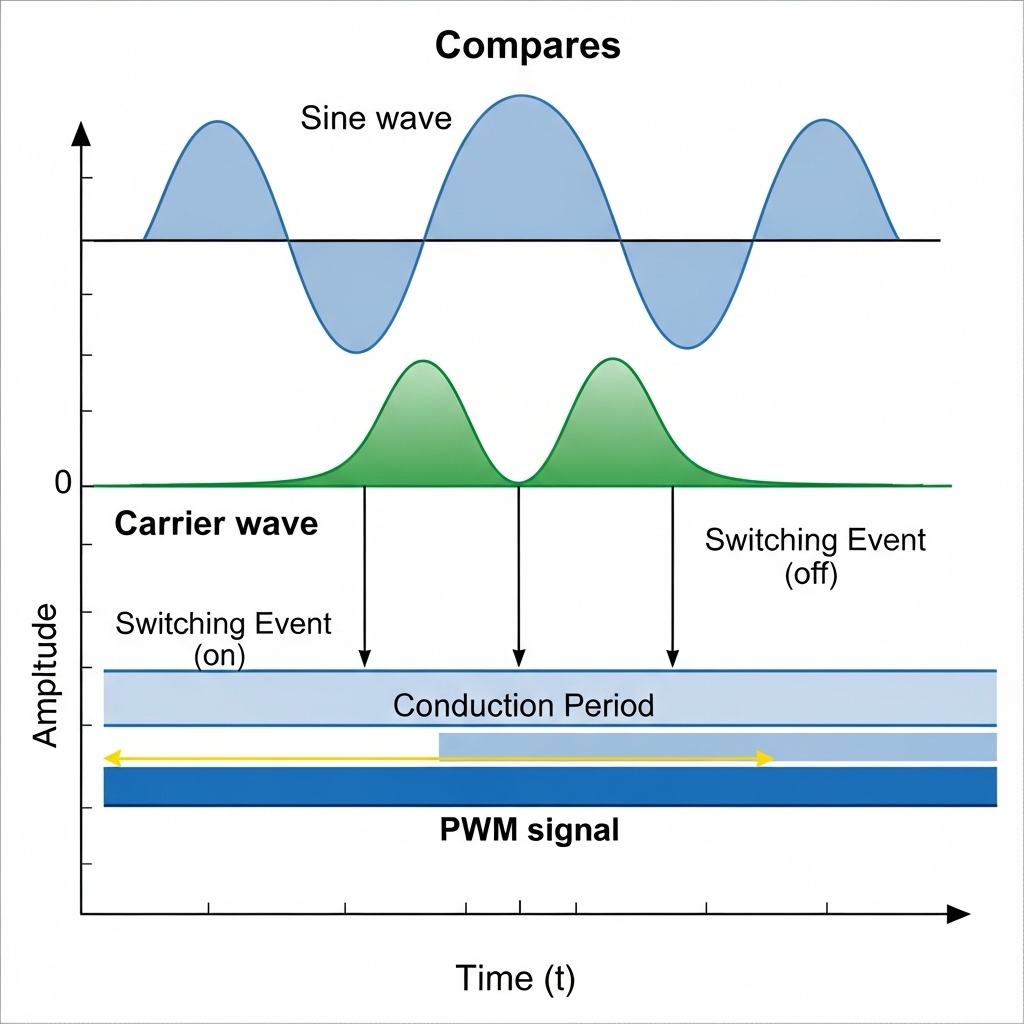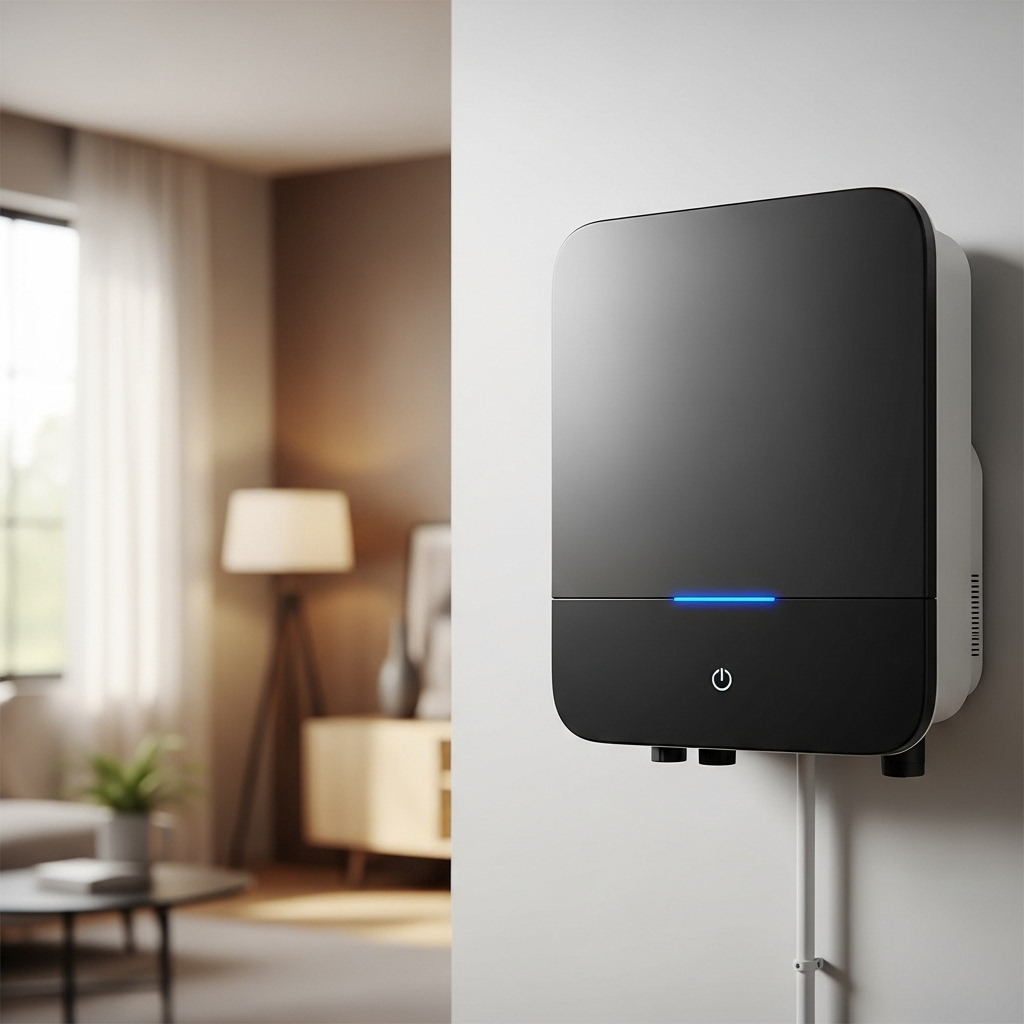Selecting the right inverter topology is a critical decision in designing a solar energy storage system (ESS). This choice directly influences system efficiency, physical size, reliability, and ultimately, cost. Among the various multilevel inverter designs, the T-Type and the Neutral-Point Clamped (NPC) topologies are two prominent options. Understanding how each one scales from residential to utility applications is key to developing effective and competitive energy solutions.
Understanding the Core Topologies: T-Type and NPC
Both T-Type and NPC are three-level inverter topologies. They are designed to generate a better approximation of a sine wave compared to traditional two-level inverters. This results in lower total harmonic distortion (THD), reduced filter size, and improved overall performance. Yet, they achieve this in fundamentally different ways.
The Classic Approach: Neutral-Point Clamped (NPC) Inverters
The NPC topology, introduced several decades ago, is a well-established workhorse in medium to high-voltage applications. Its key feature is a set of clamping diodes that connect the output phases to the system's neutral point. This structure effectively halves the voltage stress across the main switching devices, allowing the use of lower-voltage-rated components in high-voltage systems. It has a long track record of reliability in demanding industrial and utility-scale environments.
The Modern Challenger: T-Type Neutral-Point Clamped Inverters
The T-Type topology is a more recent innovation that refines the three-level concept. Instead of using clamping diodes, it employs a bidirectional switch arrangement (typically two IGBTs or MOSFETs in a common-emitter or common-drain configuration) to connect the output to the neutral point. This seemingly small change has a significant impact on performance, primarily by reducing conduction losses. When the inverter generates the zero-voltage level, current flows through this active switch instead of a switch and a diode, as in the NPC design. This leads to a notable improvement in efficiency.

Key Metrics for Scalability: A Head-to-Head Comparison
When evaluating how these topologies scale, we must look beyond basic operation and analyze specific performance metrics. The ideal choice often depends on the target application's power level, voltage, and cost constraints.
| Metric | T-Type Inverter | NPC Inverter |
|---|---|---|
| Overall Efficiency | Higher, especially at partial loads, due to lower conduction losses. | Slightly lower due to diode conduction losses. |
| Power Density | Higher, due to better efficiency and smaller cooling requirements. | Lower, as it requires more robust thermal management. |
| Component Count | Fewer diodes, but requires a bidirectional neutral switch. | More diodes and switches overall. |
| Voltage Stress | Neutral leg switch sees full DC-link voltage; main switches see half. | All main switches see half the DC-link voltage. |
| Maturity | Newer, gaining rapid adoption. | Highly mature and field-proven. |
Efficiency Across the Power Range
Efficiency is arguably the most significant advantage of the T-Type topology. The reduction in conduction losses directly translates to less wasted energy. This benefit is present across the entire load range but is particularly pronounced at partial loads, where solar ESS often operates. For a residential system, this means more stored solar energy is available for use. In utility-scale applications, even a fractional improvement in efficiency can result in substantial financial savings over the system's lifetime. While topology is crucial, it's one piece of the puzzle. Achieving optimal system output depends on a holistic view of solar storage performance, which includes everything from battery chemistry to system integration.
Power Density and Physical Footprint
Higher efficiency leads directly to higher power density. Because a T-Type inverter generates less waste heat, it requires a smaller and less complex thermal management system. This allows for a more compact and lightweight inverter design. For residential and commercial installations where space is often limited, this is a major scaling advantage. For large, containerized utility-scale ESS solutions, higher power density means more processing power can be packed into a standard enclosure, reducing the overall project footprint and associated balance-of-system costs.
Component Stress and Reliability
Here, the comparison becomes more nuanced. The NPC topology's main advantage is that its clamping diodes naturally limit the voltage across all primary switching devices to half of the DC-link voltage. This is a robust and simple arrangement. In a T-Type inverter, the main switches also see only half the voltage, but the bidirectional switch on the neutral leg is exposed to the full DC-link voltage during certain states. This requires careful component selection and gate driver design to ensure reliability, especially as system voltages scale up for high-power applications.
Application-Specific Scaling: Where Does Each Topology Shine?
Neither topology is universally superior; their suitability depends on the specific demands of the application.
Residential and Commercial Solar ESS
For systems ranging from a few kilowatts to around 100 kW, the T-Type topology is often the preferred choice. Its superior efficiency and higher power density provide a clear competitive edge. The benefits of a smaller, lighter, and more efficient inverter are highly valued in this market segment. The voltage levels are manageable, and the reliability of modern power electronics makes the T-Type design robust for these applications.
Utility-Scale Energy Storage Systems
In the megawatt-scale arena, the decision is more complex. The NPC topology has a long and successful history in high-power converters, giving it a reputation for ruggedness and reliability. However, the efficiency gains of the T-Type are compelling enough that it is increasingly being used in modular utility-scale systems. The challenge of scaling T-Type designs to high voltages (e.g., 1500V DC) is being met with advanced SiC switching devices and sophisticated control strategies. As noted in an IEA report, System Integration of Renewables, the trend toward higher DC-to-AC ratios in solar plants places greater demands on inverter performance, pushing designers to seek out the most efficient topologies available.
The Path Forward for Solar ESS Inverters
The choice between T-Type and NPC topologies for solar ESS is a trade-off between peak efficiency and proven high-voltage robustness. For residential and commercial applications, the T-Type's advantages in efficiency and power density make it the clear frontrunner for scalability. It allows for smaller, more cost-effective systems that deliver more usable energy.
For utility-scale projects, the NPC remains a trusted and viable option, but the T-Type is rapidly closing the gap. As advanced semiconductor technologies like SiC become more widespread, they will further enhance the performance of both topologies, enabling even greater power levels and efficiencies. Ultimately, the ability to provide reliable, scalable, and efficient energy solutions will determine the future of solar energy storage.
Frequently Asked Questions
Is a T-Type inverter always more efficient than an NPC inverter?
Generally, yes, especially at full and partial loads, due to lower conduction losses. However, the exact efficiency depends on the switching frequency, the specific components used, and the load profile. At very high switching frequencies, the switching losses in the T-Type's neutral leg can become more significant.
Which topology is more cost-effective to manufacture?
This is a complex trade-off. T-Type inverters may use fewer diodes but require a more robust bidirectional switch for the neutral leg. NPC uses more components, but they are standard and well-established. As manufacturing scales and component costs for advanced switches decrease, the T-Type often becomes more cost-effective, especially when considering the savings from smaller cooling systems.
How do switching devices like SiC and IGBT affect the choice between T-Type and NPC?
Silicon Carbide (SiC) devices offer lower switching losses and higher temperature tolerance, enhancing the performance of both topologies. In T-Type inverters, a SiC switch in the neutral leg can significantly improve efficiency. In NPC inverters, using SiC can reduce losses and increase power density, helping it compete more closely with T-Type designs. The choice of device is as critical as the topology itself.





Leave a comment
All comments are moderated before being published.
This site is protected by hCaptcha and the hCaptcha Privacy Policy and Terms of Service apply.